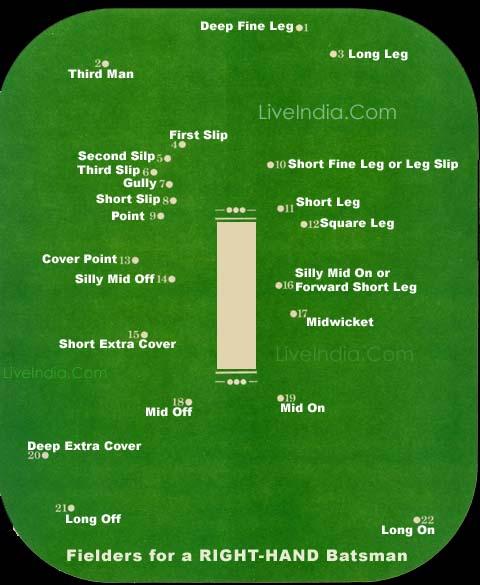What advantage would be gained by choosing to end an inning?
If you have a very high score that it is unlikely the opposition will reach you will end your inning in order to have enough time to bowl them out. If they don't get bowled out then the game is declared a draw. This is tactic is used a lot by Australia against England in England because they score a lot of runs and have to contend with English weather.
This shows all the position of the fielders.
This is helps explain the LBW rule.
Ball pitches at 1, hits imaginary pad following line indicated: not out. Ball pitching outside line of stumps, hits pads outside line of stumps, batsman playing a shot. WARNING - if no shot played and umpire thinks ball would have cut back enough to hit stumps then you can be given out!
Ball pitches at 2, hits imaginary pad following line indicated: out. Only saving grace would be umpire deciding ball would rise over stumps, or batsmen getting a big stride down the wicket to introduce doubt as to possible path of the ball.
Ball pitches at 3, hits imaginary pad following line indicated: out. Only saving grace would be umpire deciding ball would rise over stumps. Big stride unlikely to save you from a straight ball!
Ball pitches at 4, hits imaginary pad following line indicated: out. Only saving grace would be umpire deciding ball would rise over stumps, or was cutting back emough to miss the off stump.
Ball pitches at 5, hits imaginary pad following line indicated: not out. Batsman cannot be given out LBW if ball pitches outside leg stump.
This is what an umpire does when a six is hit.
This is what an umpire does when a four is hit.
And this is what he does when England are batting.









